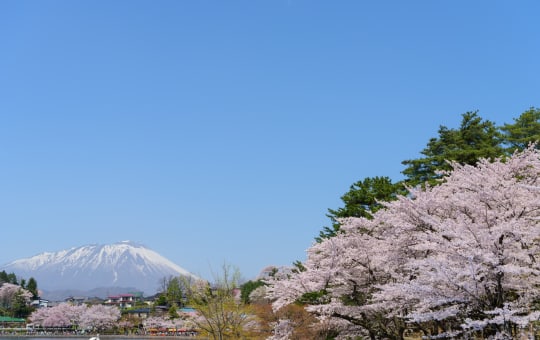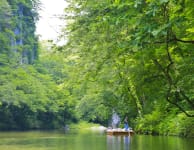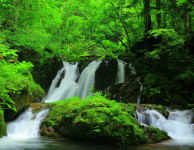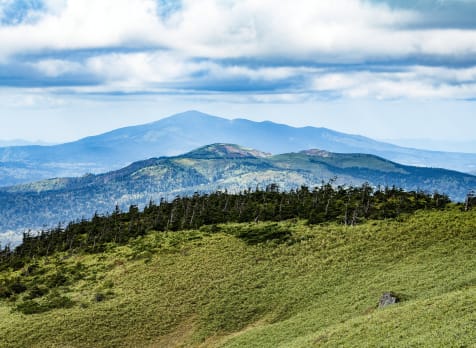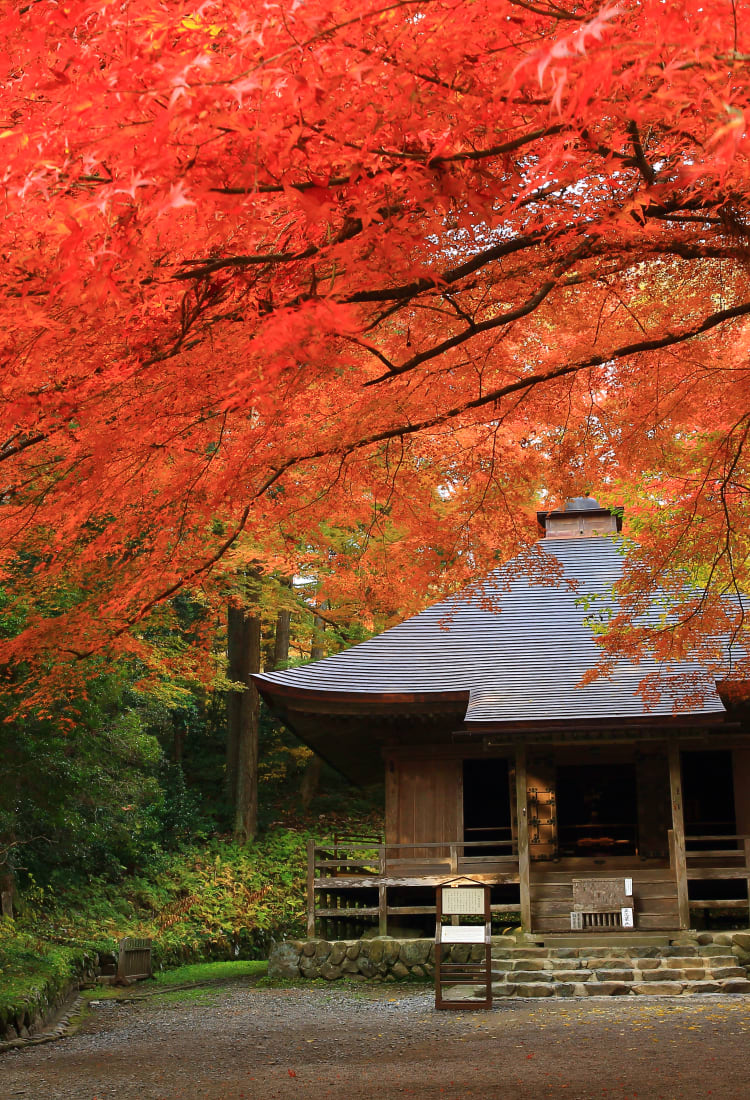

IWATE Hiraizumi & Around An ancient city whose quiet beauty once rivaled that of Kyoto, and famed for a golden temple
An ancient city whose quiet beauty once rivaled that of Kyoto, and famed for a golden temple
Nestled in the mountains of southern Iwate is Hiraizumi, an ancient city that once rivaled Kyoto for its beauty and elegant surroundings. This was the capital of the Northern Fujiwara lands, an independent country that briefly flowered and then went into elegant decline after the fall of the Fujiwara clan in the late 1100s. Today, you can see the remnants of that once-beautiful city while enjoying the gorges and other scenic beauty of southern Iwate.

Don't Miss
- The many temples and ruins around Hiraizumi on the UNESCO World Heritage list
- The must-see World Heritage Chusonji Temple and its gilded Konjikido hall
How to Get There
Take the JR Tohoku Shinkansen to Ichinoseki Station.
Depending on your destination, different buses or trains are available from Ichinoseki Station. Hiraizumi Station is just eight minutes by local train from Ichinoseki Station.
Hiraizumi Junkai Bus Runrun takes you around many of the key historic spots in a loop from Hiraizumi Station. A day pass costs 450 yen.
Quick Facts
Over 3,000 artifacts have survived from the golden era of Hiraizumi
The rocks of Motsuji's Pure Land Garden are arranged to resemble coastal Iwate
A golden jewel of Buddhism
Chusonji Temple was built in the 11th and 12th centuries by the northern Fujiwara clan, and at its height rivaled the prestige and brilliance of Kyoto's finest. Within the temple complex, you will find Konjikido, completely lacquered and gilded inside, including the walls, ceilings and floors. The inside has a large number of gilded Buddhas covered in gilded lacquer and intricately inlaid with mother-of-pearl. The mummies of the first three lords of the area rest within the daises beneath the Buddhas, reposing in their own gilded paradise.
A little history
The first lord of Hiraizumi ruled the northern part of Japan essentially as a semi-autonomous region. This dominance lasted from about 1100 until 1189. The region was famous for its gold production and for horses, both highly important in the economy of the day, and the basis of the wealth and power of the domain. The semi-independence of the area was brought to an end in the process of creating the Kamakura shogunate (1192-1333).
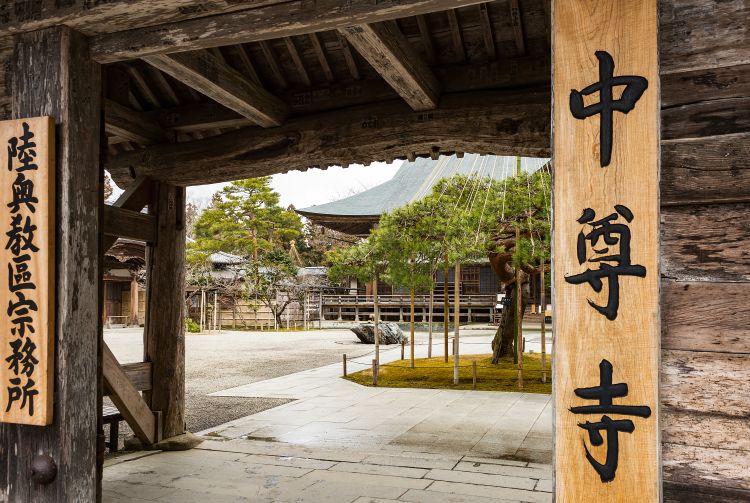
Seasonal festivals and flowers
During the spring and fall festivals you can see plays being performed outdoors on the Noh Stage at the temple. There are also two fall festivals at Chusonji : the Fujiwara Autumn Festival and the Chrysanthemum Festival. The Chrysanthemum Festival features spectacular floral displays.


Join the garden party
Just around the corner from Chusonji is the Motsuji temple complex. Although the original temples and pagodas were burned down many years ago, the elegant Pure Land gardens and pond remain. Try the temple's Ennen-cha tea, which is said to prolong life. It is the only place that you can drink it and has been named an intangible folk cultural property.

The garden and pond at Motsu-ji
Remnants of a temple garden among the rice fields
Based on Byodoin Temple in Kyoto , Muryokoin was a temple with a sprawling garden that was destroyed when its benefactors were defeated in battle. Today, you can walk through the temple ruins, surrounded by rice paddies and the remnants of the once-beautiful garden.

A city fit for warlords
Originally, Esashi Fujiwara no Sato was built as a film location for a historical TV drama. After filming was finished, it was turned into a theme park. Today, you can see replicas of Heian-period buildings from Kyoto and Hiraizumi, dress-up like a samurai or a Heian aristocrat for free and take as many pictures as you like.
Cruising the gorgeous gorge
The best way to see Geibikei Gorge is from a Venetian-style flat-bottomed boat. The gorge has steep cliffs on either side with several unique rock formations. On the way back to the dock, the driver of the boat will serenade you with a traditional song.
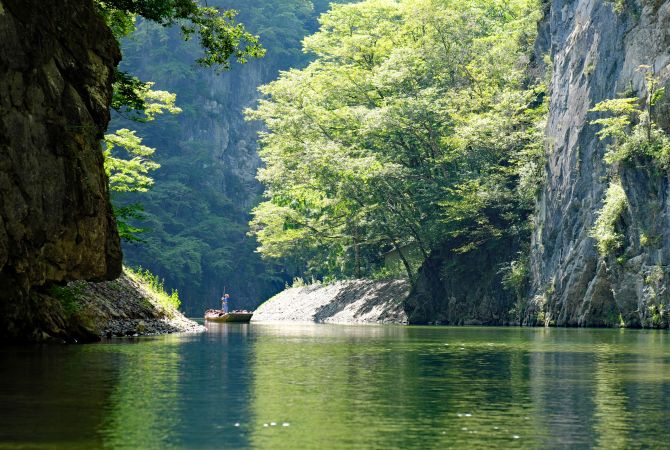
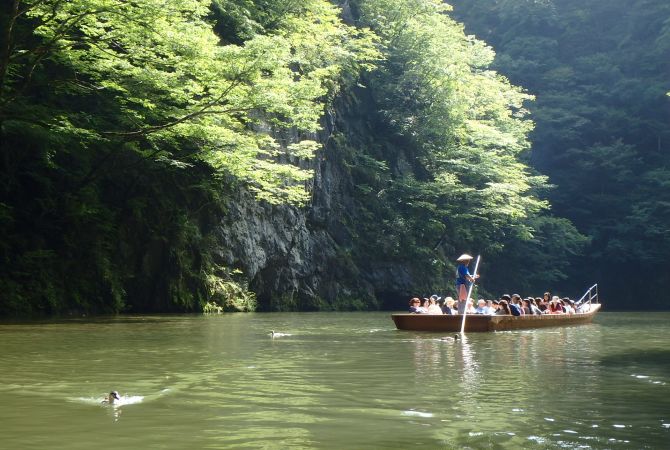
Feed them or eat them
While enjoying the views at Geibikei Gorge , you can buy fish food and feed the fish crowding the river. A different type of fish is cooked and sold as a snack at the entrance to the gorge.
Two spectacular gorges, two easy-to-confuse names
There are actually two gorges in the Hiraizumi area, Geibikei Gorge and Genbikei Gorge. If you are going to one of the gorges, double-check that you are going to the right place, since even Japanese people get the names confused.
The polished stones of Genbikei
Over eons, the Iwai River has eroded the volcanic rock in its path to form Genbikei Gorge. The rapidly running water has polished the rocks to fashion a smooth yet rugged landscape.
Eat flying dumplings
Genbikei is most famous for its flying dango or rice dumplings. You order the dango on one side of the river by putting money into a basket attached to a rope and sending it to the shop across the river. The order is put in the basket and sent back to you. The dango are served with sweet bean, sesame or sweet soy sauce on top.





















































